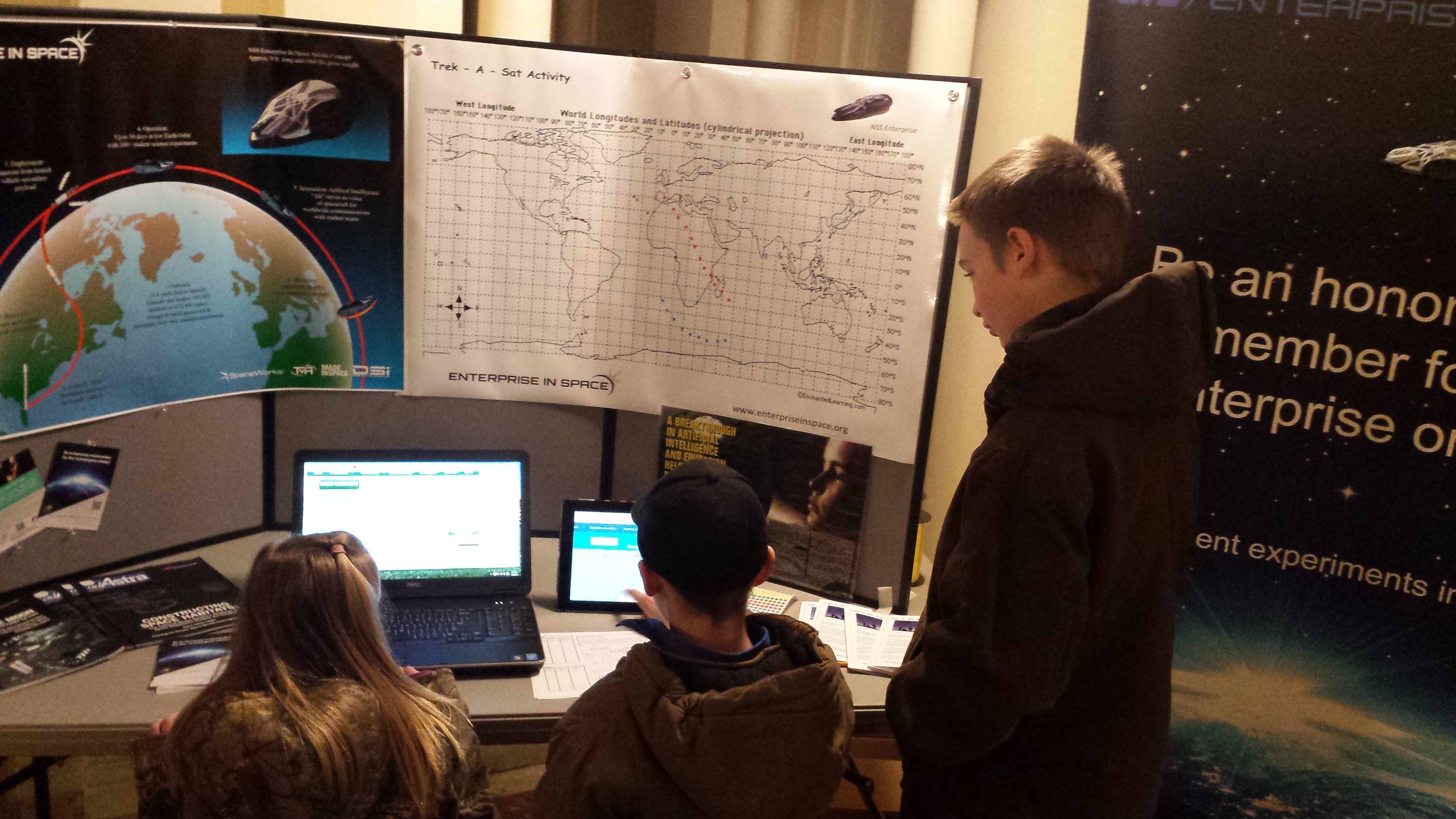Educator Onboarding
LEO Art Challenge Workshop
ICE 2019: Satellite Tracking, Orbits, and Modeling
SEEC 2019: Satellite Tracking, Orbits, and Modeling
Workshop:ITEC Trek-a-Sat
Workshop: 2018-01-27 Yerkes
Workshop: 2017-10-28 Carthage-Yerkes Electrostatics in Space
Workshop: 2017-06-29-BTCI-Life in Space!
Workshop: 2017-03-11 Yerkes
Workshop: 2017-02-07 SEEC
Workshop: 2017-01-28 Yerkes
Tools You Might Use
Educational Learning
Standards
Documentation
Trek-A-Sat- MS
Topic outline
-
 Updated August 2023
Updated August 2023
Written By: Frances Dellutri, Middle School/Intermediate Level SpacEdge Education Team, June 2016
SpacEdge Topic: Atmosphere, Centripetal Force, Computers, Mathematics, Micro-gravity, Free-fall, Orbital Mechanics, Physics, Satellites, Spacecraft, Weightlessness, Tracking Satellites\
Grade (Age) Level: Grades 5-8 (Ages 10-13) Key Topics Associated with Standards: Collecting, Analyzing and Interpreting Data; Gravitational Interactions; Forces and Motion, Relationship between Energy and Forces US Standards: NGSS:
- MS-ESS1-1 http://www.nextgenscience.org/pe/ms-ess1-1-earths-place-universe
- MS-PS2-4 http://www.nextgenscience.org/pe/ms-ps2-4-motion-and-stability-forces-and-interactions
- MS-PS2-5 http://www.nextgenscience.org/pe/ms-ps2-4-motion-and-stability-forces-and-interactions
A satellite is moving overhead every few minutes and it's fun to be able to identify them, watch for them, and track them. This project gives great direction on how to track satellites overhead, both visually and electronically.
Trek-A-Sat gives you the tools to track a satellite in the sky right now in real time!
If you would like to learn more about satellites, their orbits and the forces involved with orbiting satellites, log into The SpacEdge Academy and learn about satellites in the lesson called "Satellites - Understanding How They Work! "
If you are ready to start tracking satellites, move ahead to join the lesson where you wish!
INDEX
Section 1. Trek-a-Sat
Section 2. How to Track Satellites by Hand
Section 3. Looking at Factors That Affect the Orbit Time and Position of Satellites.
Section 4. How did You Use this Lesson
-
In an effort to keep this particular lesson updated and user-friendly, it would be greatly helpful to the Enterprise In Space Education Team if you would spend a moment or two answering a few questions about your use of this lesson.
Many Thanks!
The SpacEdge Education Team
